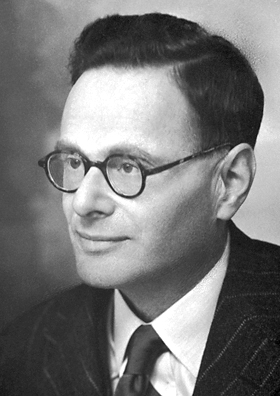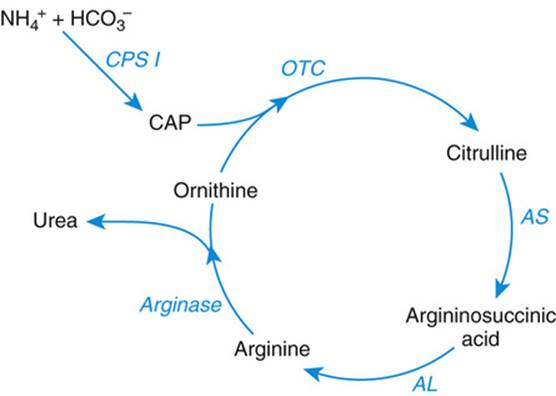Rare diseases
Urea Cycle Disorders And Organic Aciduria
They are family of inherited diseases that affect how the body removes the waste that is made from breaking down protein and/or which result in the accumulation of organic acids in the brain and other tissues.
History of the disease and its pharmacological treatment

Hans Adolf Krebs (25/08/1900–22/11/1981) and doctoral student Kurt Henseleit (1908–1973) discover the urea metabolic cycle. Hans Krebs then won the Nobel Prize in medicine in 1953 for his discovery of the citric acid cycle, better known as “Krebs” cycle.
Argininosuccinic aciduria (Deficiency of argininosuccinic acid lyase) is identified.
The naturally occurring cofactor involved in carbamoyl phosphate biosynthesis, N-acetyl-L-glutamic acid, is isolated and characterized by Leo M. Hall (28/01/1929-02/10/2018). This cofactor N-acetyl glutamate is the essential activator of carbamoyl phosphate synthetase I (CPS-I), synthesized in the liver mitochondria, and the first and rate-limiting enzyme of the urea cycle.
Citrullinemia Type I (Deficiency of argininosuccinic acid synthase) is identified.

Ornithine transcarbamoylase (OTC) deficiency is identified.
Alex Russell describes 2 cousins with chronic ammonia intoxication and mental deterioration. A liver biopsy showed the activity of hepatic ornithine transcarbamoylase to be very low.

The American pediatrician and geneticist Barton Childs (29/02/1916-18/02/2010) describes the first patient sick on the first day of life with severe metabolic acidosis and ketosis. The disorder was originally called ketotic hyperglycinemia because of the elevations of plasma glycine in conjunction with ketosis.The real cause of the disease was identified 8 years later when studying data from the original patient’s sister, that showed accumulation of propionic acid and methylmalonic acid.
Prof. Kay Tanaka (02/03/1929-21/08/2005) report a new genetic defect of leucine metabolism that they call isovaleric acidemia. Professor Tanaka is considered a pioneer in the use of gas-liquid chromatography and nuclear magnetic resonance in the identification of inherited metabolic diseases.
Victor George Oberholzer (1923-16/05/2009) reports of the first case of methylmalonic aciduria in two children of unrelated families.
John M Freeman (11/01/1933-03/01/2014) reports a case of a patient with congenital hyperammonemia observing decreased levels of carbamyl phosphate synthetase. Dr. Freeman is also known to have brought back into popular use a long-abandoned regimen, the ketogenic diet in the treatment of paediatric epilepsy.
Carbaglu® is approved by EMA for treatment of Organic Acidaemias

Matthias R Baumgartner proposes the first guidelines for the diagnosis and management of methylmalonic and propionic acidemia.
Symptoms
Urea cycle disorders occur in both children and adults.
Newborns with severe mutations become catastrophically ill within 36-48 hours of birth. Children with less severe mutations can remain undiagnosed because symptoms are not properly recognised.
Newborns with UCDs typically appear normal at birth and shortly after can present with nonspecific signs and symptoms similar to many metabolic diseases or even an infection, i.e., lethargy, poor appetite, vomiting, and irritability. Most infants with severe UCDs rapidly develop cerebral edema, and subsequent neurological problems. Unless treated, severe UCDs can progress to coma and death. In cases of mild UCDs, hyperammonemia can result from a variety of stressors such as illness and surgery.
Adults with mild urea cycle disorders often go undiagnosed since they are still able to produce enough of the urea cycle enzymes to effectively remove ammonia until a stressor interferes with enzyme function, or causes massive amounts of ammonia to be produced.
Incidence
1 in 35,000 births.
Metabolic stressors
Sepsis, surgery, illness, can create excessive production of ammonia in the body and overwhelm the individual’s urea cycle enzyme function, resulting in severe neurological symptoms.
Treatment
Medication and dietary management help to limit ammonia production while providing alternative pathways for its removal from the bloodstream. For instance, carglumic acid is an analog of N-acetylglutamate, and was found to improve ureagenesis.
Stone WL et al . Urea Cycle Disorders. StatPearls [Internet]. Treasure Island (FL): StatPearls Publishing; 2020-2019

 English
English Deutsch
Deutsch